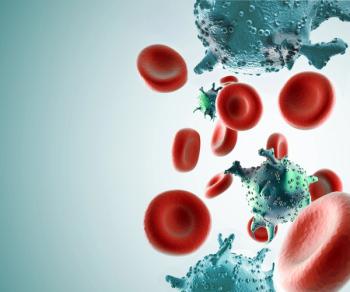
Oncology NEWS International
- Oncology NEWS International Vol 17 No 5
- Volume 17
- Issue 5
Comment: Research, regulatory trends suggest ESAs should play declining role in patient care
A new meta-analysis showing an increased mortality risk with ESAs, combined with new laboratory data on the mechanisms of ESA toxicity, may cause clinicians, and FDA, to re-think their use.
Editor’s Note: In February, JAMA published a meta-analysis led by Charles L. Bennett, MD, a member of the Oncology News International Editorial Advisory Board, suggesting that ESA use is associated with increased mortality. Here, Dr. Bennett and co-author Simone N. Boyle elaborate on the findings.
The FDA approved the use of erythropoietin-stimulating agents in cancer patients receiving chemotherapy 15 years ago, but only recently has significant attention forced a re-examination of the controversy over ESA use in these patients. Mounting clinical evidence associates ESA use with increased mortality rates, and laboratory evidence has shown the drugs can promote tumor growth.
These findings are making it increasingly difficult to ignore the controversy surrounding ESA use in the oncology setting. This increased scrutiny may lead to changes in standard clinical practice. The two agents receiving the attention are Procrit (epoetin) and Aranesp (darbepoetin alfa).
Clinical research
Resolutions in the debate surrounding ESAs remain elusive largely because research has been inconclusive and inconsistent. More than 50 large phase III clinical trials have evaluated the use of ESAs within the cancer setting; however, these trials produced conflicting results.
Several meta-analyses of these trials aimed to clarify safety information. While the meta-analyses demonstrated increased risk with ESA use, these results were not statistically significant.
The most recent meta-analysis published in February,1 the first since 2006, shows a statistically significant increased mortality risk with ESAs for the treatment of cancer-related anemia. This report included 13 trials and 5,369 patients (for a total of 51 trials and 13,611 patients) that had not been included in previous meta-analyses. Some of the trials included cancer patients not receiving chemotherapy (not an approved ESA indication).
Laboratory research
The biological basis for this clinical observation is not entirely understood, although laboratory evidence is growing more comprehensive. The initial laboratory debate focused largely on whether ESA toxicity in cancer patients results from hemoglobin levels greater than12 g/dL or if there is a more direct toxicity. Evidence now supports a more direct effect.
This evidence hinges on four central questions:
• Are erythropoietin receptors (EpoR) present on tumors?
• Are the downstream effects of these receptors also present in tumors?
• What is the role of EpoR in the facilitation of tumor progression?
• What is the role of EpoR in increased resistance to chemotherapy?
Researchers have identified EpoR on a wide range of tumor cells, including breast, head and neck, lung, cervical, ovarian, prostate, endometrial, renal, and gastric cancer, as well as neuroblastomas, gliomas, melanomas, and lymphomas.2 Of the studies looking for the presence of EpoR in the aforementioned cancer types, 88% confirmed the presence of EpoR.3
Interestingly, these results vary from cancer type to cancer type. For some cancers, head and neck or prostate for example, EpoR is identified in 100% of studies conducted. However, for other cancer types, such as renal or ovarian, this percentage is lower (67% and 83%, respectively).3
While evidence supporting the presence of EpoR on tumor cells has increased, there are a few studies that negate this evidence. A primary argument made in these studies is that the methods used by previous investigators were nonspecific, claiming that the antibodies utilized were equally likely to identify ubiquitous heat shock proteins as EpoR.4
But the majority of these studies have been conducted in conjunction with representatives of the manufacturers and not with independent academics. They have also been contradicted by later studies that examined the presence of EpoR in addition to the presence of the downstream effects of the receptor-ligand complex.3,5
Further evidence is found in studies that indicate the direct tumor-promoting potential of ESAs. Basic laboratory findings demonstrate increased virulence of a variety of cell lines in response to ESA exposure. These findings have related the increase in virulence with the presence of EpoR as well as with the activity of downstream effects of EpoR in cancer cell lines.5
ESAs have been repeatedly shown to stimulate the chemotaxis, migration, invasion, and proliferation of cancer cells in all the tumor types studied to date, with the exception of non-small-cell lung cancer.3
In addition to the direct tumor-promoting effect of ESAs, laboratory evidence has also shown increased tumor resistance to chemotherapy with ESA exposure.6 Although the mechanism remains unclear, a common hypothesis is that the Epo/EpoR system is able to inhibit apoptosis stimulated by chemotherapy agents.
In a recent editorial, Stephen Lai, MD, PhD, of the University of Pittsburgh Cancer Institute, noted that it should not be surprising that cancer cells are able to subvert the Epo/EpoR system. Dr. Lai states, “A significant number of oncogenes represent signaling molecules that have been appropriated by cancer cells to facilitate proliferation and survival.”7
Erythropoietin and its receptor are likely candidates, as they are known to stimulate proliferation and inhibit apoptosis in erythrocytes.
Current action
In March, the FDA’s Oncology Drugs Advisory Committee (ODAC) considered potential restrictions on the use of ESAs in the oncology setting. [For more on the March ODAC meeting, see ONI April 2007, page 1.] The committee reviewed publications and heard testimony from representatives of ESA manufacturers, independent academics, and patient advocacy groups before voting on their official recommendations.
One member of the committee framed the situation with an astute and poignant question: “If the data on this issue were as uncertain as it is now, and the drug were not on the market, would we approve this drug for release onto the market, or would we wait until we were sure?”
While the committee did not vote to restrict ESA use in all cancer patients (1 was in favor, 13 against), it did support significant restrictions. The committee voted to restrict ESA use to patients who are not receiving curative treatments (13 vs 1). Additionally, the committee voted to recommend against the use of ESAs in all patients with breast and head and neck cancer (9 vs 5), as research demonstrating associated risks in these fields was the most conclusive.
The committee lacks the executive power of the FDA, but precedents suggest that their recommendations will carry great weight.
ESAs in the future
While the proper response to the ODAC recommendation could save many patients’ lives, it is clear that this controversy has not yet come to a close. At the time of the ODAC meeting, only research in breast and head and neck cancers was considered conclusive enough to limit ESA use in those patients.
Since current findings show variability in ESA sensitivity among the differing cancer types, further research will be critical to the proper evaluation of standard practice. Thus, it is essential that future laboratory findings be pushed to the center of this controversy, as only a more thorough and dynamic understanding of ESAs will lead to proper regulations of use of these drugs in cancer patients.
References:
References
1. Bennett CL, Silver SM, Djulbegovic B, et al: Venous thromboembolism and mortality associated with recombinant erythropoietin and darbepoetin administration for the treatment of cancer-associated anemia. JAMA 299:914-924, 2008.
2. Jelkmann W: Erythropoietin after a century of research: Younger than ever. Eur J Haematol 78:183-205, 2007.
3. Kuykendal A, Bennett CL, McCoy J, et al: Tumor progression and mortality associated with administration of erythropoiesis stimulating agents (ESAs) to cancer patients: Is toxicity due to ESAs or elevated hemoglobin (Hb) levels? 2008 ASCO Annual Meeting Proceedings (J Clin Oncol supplement, in press).
4. Farrell F, Lee A: The erythropoietin receptor and its expression in tumor cells and other tissues. Oncologist 9(suppl 5):18-30, 2004.
5. Henke M, Verma A, Acs G: Erythropoietin receptors on cancer cells: Exciting perspectives, difficult to appreciate. Blood 108:1107-1108; 2006 (author reply pp 1108-1109).
6. Li J, Vesey DA, Johnson DW, et al: Erythropoietin reduces cisplatin-induced apoptosis in renal carcinoma cells via a PKC dependent pathway. Cancer Biol Ther 6(12):1944-1950, 2007.
7. Lai SY, Grandis JR: Understanding the presence and function of erythropoietin receptors on cancer cells. J Clin Oncol 24:4675-4676, 2006.
Articles in this issue
over 17 years ago
Immunotherapy agent promising in NSCLCover 17 years ago
NCCN greenlights nilotinib for imatinib-resistant CML patientsover 17 years ago
No overall survival benefit for dose-intense regimen in SCLCover 17 years ago
Make a note of new smoking cessation codesover 17 years ago
Relistor for treating OICover 17 years ago
Experts argue against need for phase III proton Rx trialsover 17 years ago
Spotlight on Cancer Centersover 17 years ago
Novel peptide vaccine promising in myeloid leukemiaover 17 years ago
Intensive imatinib/chemo ups EFS in pediatric Ph+ ALLNewsletter
Stay up to date on recent advances in the multidisciplinary approach to cancer.

















































































